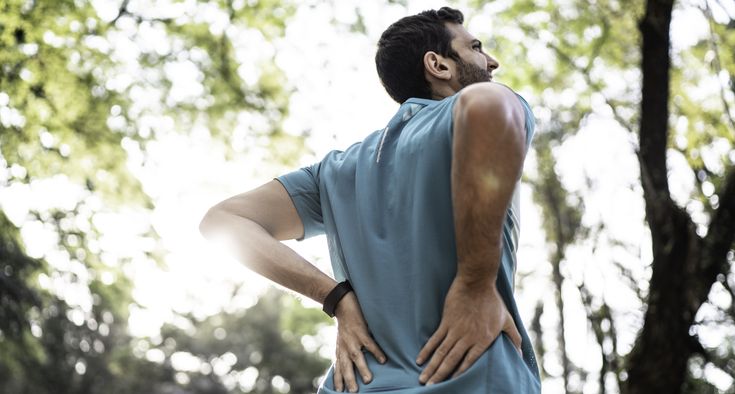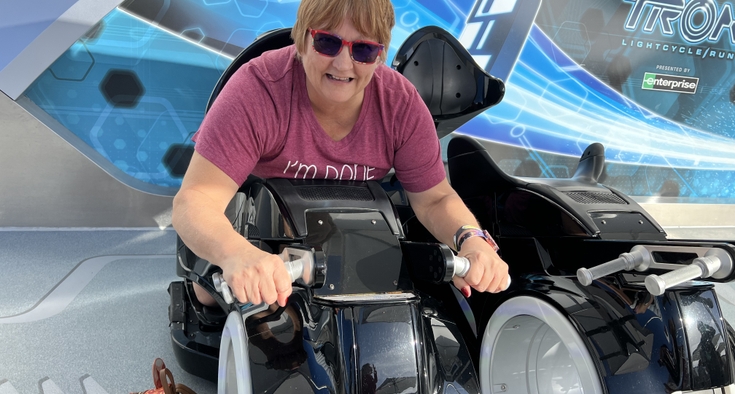If you’re old enough to have decorated your bedroom with an inflatable chair, you probably couldn’t sit on that chair today – at least not without aches and pains tomorrow.

And if you’re a Millennial or Gen-Xer who has ever found yourself sore from actions like holding a phone up to your ear, sorting laundry on the floor, or walking barefoot in your own house, you understand that your body isn’t quite as resilient as it used to be.
Is it time to surrender to the inevitability of aging? Or can you do something to help? Here to explain how to make your back pain as rare as a first-generation Beanie Baby is family nurse practitioner Emily Lynch from Novant Health Spine Specialists - Kimel Park.
Get the personalized spine, back and neck care you deserve.
Is it true that when you hit your 30s and 40s, back pain from moving too quickly or lying down wrong is just “to be expected”?
In your 30s and 40s, you can start to get age-related pain due to normal wear and tear of your spine. Your risk for arthritis in your spine also increases after you turn 40, due to joint inflammation and the breakdown of the cartilage in the joints along your spine.
At these ages, it’s not unusual to get some back pain from daily activities such as sitting or standing for too long, sitting or sleeping in an awkward position, lying on a surface like the floor that doesn’t support the natural curvature of your spine, overuse, or exercising more strenuously than normal. If you make a sudden awkward movement, you could strain your back or spinal ligaments, which causes pain.
If words like “a dull ache” or “sore” describe your pain – and your pain improves with rest, ice, taking a hot shower or using a heating pad, and/or over-the-counter medications like lidocaine patches or nonsteroidal anti-inflammatory drugs (such as ibuprofen or aspirin) – then that back pain may be “normal” for your age.
What can we do to reduce our risk of back pain?
You can’t change your age, but you can change some other common culprits of back pain. These include obesity, having a career that involves heavy lifting, or the opposite: a job where you sit all day. Some basic do’s and don’ts include –
DON'T:
- Smoke – it’s a big risk factor for chronic pain.
- Lift heavy things by yourself or without support.
Best doctors. Amazing nurses. Remarkable care.
DO:
- Maintain good posture and be aware of ergonomics while doing daily tasks. Bend with the knees instead of leaning over to pick things up, and make sure your computer, chair, and keyboard are at optimal height if you work at a desk. (See specific recommendations for health care workers and delivery drivers in the box below.)
- Manage your weight. Being at a healthy weight reduces pressure on your spine and overall joint inflammation, which reduces pain.
- Include enough vitamin D and calcium in your diet to strengthen your bones and decrease your risk of future back pain. In your 30s and 40s, aim for 1,000 mg of calcium and 400-800 international units (IU) of vitamin D each day. (If you take a calcium supplement, most include vitamin D.)
- Stretch before doing tasks that involve repetitive movements or holding a position for a long time (such as cleaning or yard work). Stretching loosens up your spine, reduces muscle tension, and improves your range of motion, all of which prevent back pain from starting.
- Take at least one stretch and rest break for every hour of physical activity – including when you’re performing household chores or a physically demanding job.
- Wear supportive shoes. For women, this may be the age you should start wearing tennis shoes more regularly and skip heels or flats, especially if you’re going to be on your feet all day.
- Sleep on a firm mattress – and choose your bed partners wisely: if you share a bed with your dog or your toddler, you’re more likely to get stuck in awkward positions that could lead to back pain.
- Most importantly: build your core strength. What you do when you’re younger (and yes, you’re still young…ish) ultimately affects how you feel as we age. Exercising your core throughout the years will help with your back pain both now, and down the road.
Tell me more about exercise. What exercises prevent back pain, and what exercises can cause back pain?
If your back already hurts, I recommend lower-impact exercises like swimming, walking, yoga or stretching. Playing higher-impact sports like running, basketball or football can make your pain worse. Classes like CrossFit or boot camps are good if you are already in shape and have a strong core, but I don’t recommend starting there and going full throttle right away if you aren’t already active and want to avoid back pain.
If you don’t exercise right now, start somewhere, and choose more challenging activities as you can tolerate them.
Overall, you want to shoot for exercising at least 30 minutes a day, three to four times a week, and working out your back two to three times a week. Moves that will help your back include one-arm dumbbell rows, pullups, lying leg raises, crunches, planks and squats. Start out with lighter weight, and work your way up as you go.
Don't try to match what other people are doing, but listen to your body and do what is best for you. If you start feeling discomfort, dial back the weight or slow down. If you ever feel sharp pain, stop.

Are you at higher risk of back pain?
Here are a few groups that need to take special precautions, according to nurse practitioner Emily Lynch.
Health care workers: Whether helping with procedures, lifting patients, or administering shots to flailing toddlers, your work often involves holding awkward positions for long periods of time. When I worked in the emergency room, I always reminded my co-workers: "Don't try to be the hero.” If a patient asks for help moving, it’s tempting to just help them yourself. Instead, take a minute to grab a team member, utilize the patient lifts, and use the gait belts. This will definitely help save your back over time. Also, make sure you wear good, supportive footwear.
Delivery drivers: You have to lift heavy boxes all day, and are bending, twisting, and jumping in and out of your truck constantly. All of this increases your risk for back pain. It’s really important to stretch before your workday, practice good ergonomics when lifting and driving, use a dolly to lift heavy items, and stretch in between deliveries. Support braces can help, so talk with your health care team about which style brace might work best for your needs and your job.
Former athletes: We see a lot of people who played high-impact sports in their teens and in college and are now in pain. If this is you, we will likely refer you to physical therapy to go over exercises that help your pain and prevent it from getting worse.
Pregnant women: Weight gain from pregnancy puts additional pressure on your spine. As your uterus grows, it changes your center of gravity, which stretches out and ultimately weakens your abdominal muscles. Both of these normal, expected changes can cause lower back pain. Regular walking and stretching can help prevent back pain, and physical therapy and prenatal massage can treat back pain if you’re already experiencing it.
Postpartum women: While you’re healing from birth, get help to lift and lower your baby and practice good ergonomics for holding and feeding the baby (breastfeeding pillows can help). Once you’re out of that fresh postpartum period, be aware of how you’re lifting the baby. If your baby is playing on the floor, don’t just bend straight over to pick them up – instead, squat down. Also, if you practice babywearing, look for a wrap that distributes the baby’s weight evenly across your body. Improving your core strength will help your back pain, and don’t be afraid to seek pelvic physical therapy if you need it.













